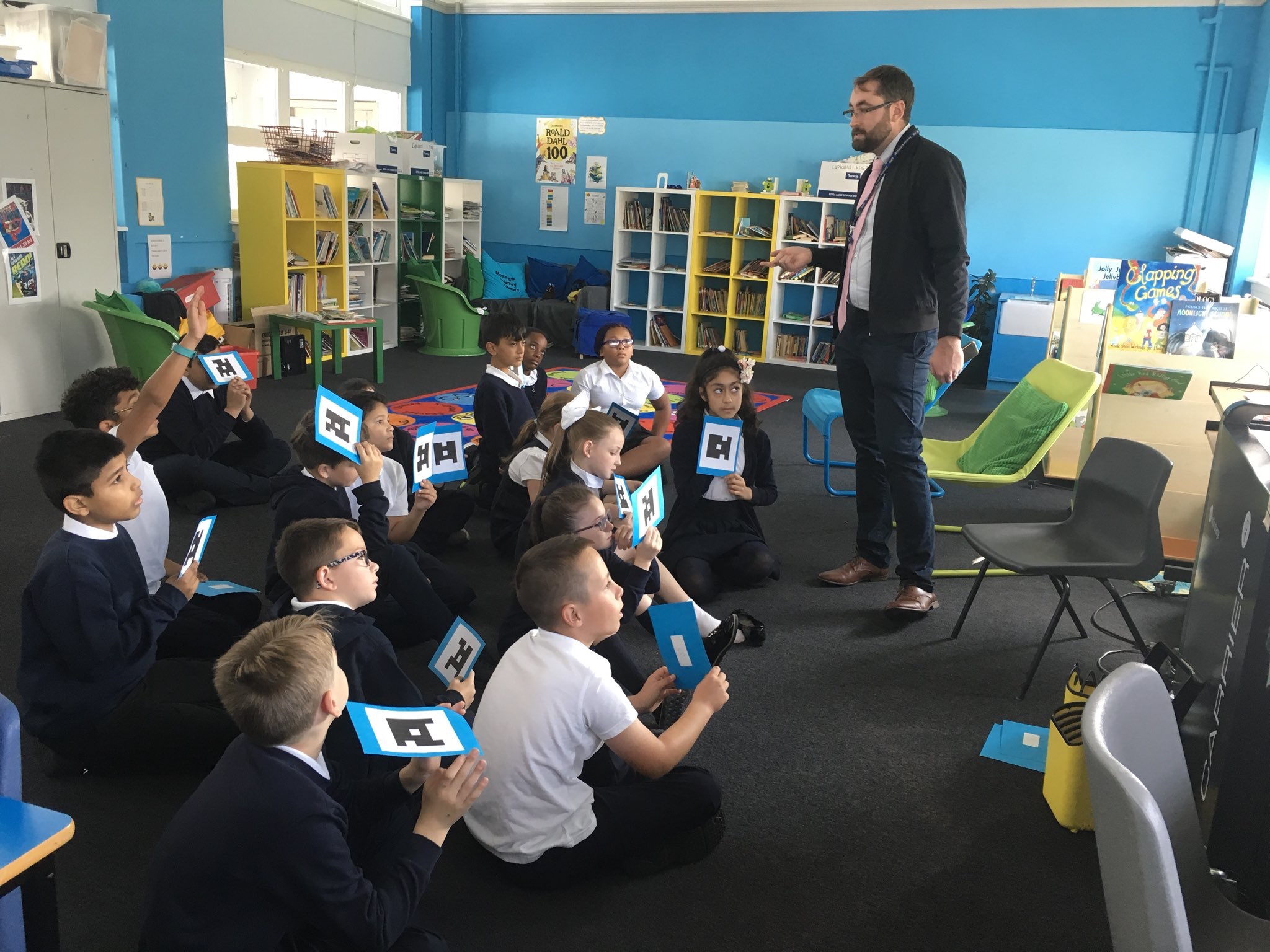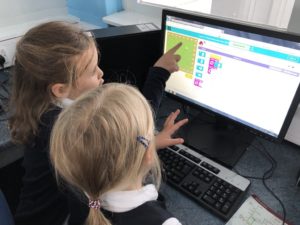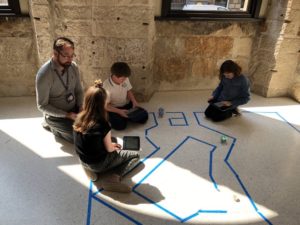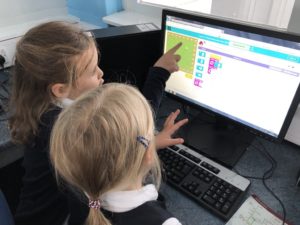The Digital Revolution

10th September 2018
The digital revolution is real and it’s here. No longer can we say “no, I don’t teach technology – that’s someone else’s job” because it’s everyone’s job. For some of us, the prospect of teaching digital literacy skills fills us with fear, as it is an area that many of us are not confident in. Fortunately, help is at hand. There are many educators and websites that continually share ideas and advice to help you develop your own digital skills and disseminate that knowledge amongst your learners and colleagues. Building a professional learning network on twitter, for example, is a way to immediately access great ideas and advice.
My own journey into coding
Often, when I talk to teaching professionals about the benefits of coding, I’m met with responses such as “But I’ve not got the first clue how to code…” or “Well, it’s okay for you. You know how to code.” The truth is, I don’t really know either. I’m not a coder, or a programmer. I wasn’t brought up in a household of computer scientists or web designers. I didn’t study computing any further than standard grade in high school. I’m not a coder, but I am a learner.
As teachers, we are professional learners. Until I received training in using restorative approaches, I didn’t have the first clue. Until I researched world religions before teaching R.M.E. for the first time, I doubt I could have told you much about any of them. The same is true with coding. Okay, in fairness I have always been comfortable using computers and solving problems which is why (after two years of assisting my colleagues with setting up the wires behind their computers and logging ICT faults to the council) I was made ICT coordinator in my previous school. Truth be told, I thought it was just a fancy title for what I was already doing – which it was, until people started to ask me about teaching computing.
Until that point I hadn’t really thought about what ‘teaching computing’ looked like; I certainly hadn’t thought about teaching computer science or using digital learning to raise attainment across the curriculum; yet, here I was having to answer questions about how to teach computing, and more specifically coding. So, I did what any self-respecting teacher would do: I said, “I’ll get back to you” and I went off to do some research.
Professional Learning Networks
Research into teach digital literacy skills, in addition to discovering how simple it was to teach coding, took me onto Twitter. I wanted to learn from other educators and get ideas and inspirations. Over twitter, I made some fantastic contacts, and even formed friendships, with educators and lecturers. I’ve always enjoyed networking, and digital networking opened up a new world for me – a world of instant CLPL. I learned more from reading one or two tweets than I did in some full day training sessions. If you’re not already on Twitter, I couldn’t recommend it enough as the best Professional Learning Network for educators.
Learning into Pedagogy

As I mentioned earlier, teaching coding is actually really simple. There are full online courses that do the teaching for you; and the program Scratch, whilst initially can be daunting, is an incredible place for children to create their own games, programs and animations. I won’t go into detail about teaching coding as I have already written a blog post on ‘Teaching Coding for the First Time’ and also on ‘Offline or Unplugged Coding’.
I have been in a fortunate position for the last few years of being able to teach digital literacy to all classes for their teacher’s NCCT time. In October, I successfully applied for a Principal Teacher post in Mosspark Primary School where I was able to continue teaching ICT for class NCCT which has had the benefit for me of being able to see and develop progression across the whole school; however, it is important that colleagues don’t feel that they need not teach digital literacy skills as they’re ‘already being covered’.

Digital learning is now at the heart of the curriculum. Our learners need digital skills in order to be successful in their future lives, as we have truly entered a digital era. Therefore, Digital Learning is at the heart of our SIP, as I feel it should be in every school. We have set up a team of Digital Leaders, the Mosspark Tech Team (known as #MPTechTeam on Twitter), who are trained to support both learners and teachers in digital learning within their classrooms. I won’t detail how this works as I have previously created a blog post on ‘Starting your own Digital Leaders Team’.
As part of CLPL time, I also model digital literacy and coding lessons for staff so that they can then take forward an aspect of digital learning with their children.
CLPL is a huge part of teaching digital literacy, even for those who are confident in their own digital skills, as technology is continually evolving.
Mosspark Primary School, where I am currently based, has a fantastic model for CLPL. We have a ‘Improving Mosspark’s Classrooms’ model for moderation where our staff get training in an aspect of digital literacy. They then plan how to use that aspect of digital literacy with their stage partner(s) and use it within their classrooms for the term. We then come together and evaluate its impact. Initiatives like this allow everyone to learn together and really move forward as a team.
National Coding Week

Teaching digital skills translate into teaching so many lifelong skills. For children, starting their digital journey must start as early as possible. Children in nursery and p1 can begin to learn to code. That doesn’t mean they should spend all of their time on devices – quite the opposite. Screen time is really valuable for all children if there is interaction and communication. Screen time where the child is learning and interacting with an adult / another child can be just as valuable as time reading a book together or drawing a picture together – the key point is ‘together’. Screen time where a child is left to simply watch a video or play a game on their own is not beneficial, and this is the screen time that should be limited. It is important that this distinction about ‘what screen time is’ is noted.
If you have never taught coding before (although I would urge you to see my blog post, noted above, about offline coding, as you’ll be amazed at the amount of offline coding you will have already taught as part of your daily practice) for National Coding Week, I would urge you to get your children to try one of the Hour of Code courses available at code.org/learn. In my experience, the best ones for engaging your learners are their ‘Minecraft’, ‘Flappy Bird’, ‘Angry Birds’, ‘Code with Anna & Elsa’, and ‘Code Your Own Sports Game’ courses.
For schools with limited access to computers or Wi-Fi enabled devices, I will be posting an article on ‘How to Utilise ICT Provision Effectively’ (focusing mainly on teaching coding where only one or two devices are available to your class) on 16th September, just prior to National Coding Week. I would love to see every child across Scotland accessing at least an hour of code as part of National Coding Week, and fortunately with incredible ‘unplugged’ coding activities available and the fantastic Hour of Code activities on code.org this has never been more possible.

Get in touch
I’ve really enjoyed writing this article for National Coding Week and hope that you have found it helpful. If you’re not yet on Twitter I couldn’t recommend it enough. I do weekly blog posts on my own website, and hopefully these will continue to help you to access ideas and resources for further developing digital skills within your own schools.
Have a great National Coding Week and send me a tweet about what your children have been learning to @mrfeistsclass.
Take care,
Donald Feist,
Principal Teacher and ICT coordinator Mosspark Primary School
N.B. all images used are from the Mosspark Primary School twitter feed. Please follow @mossparkps to see some of the fantastic learning taking place in our school.